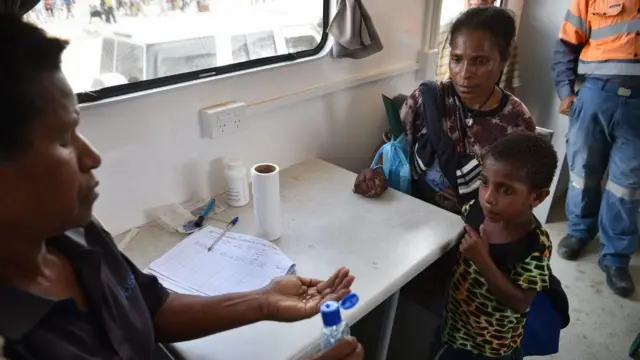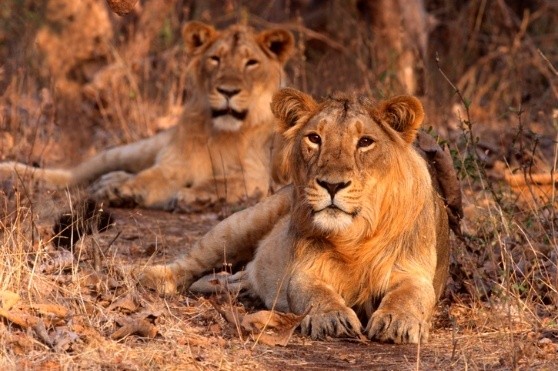- Courses
- GS Full Course 1 Year
- GS Full Course 2 Year
- GS Full Course 3 Year
- GS Full Course Till Selection
- Online Program
- GS Recorded Course
- NCERT (Recorded 500+ Hours)
- Polity Recorded Course
- Geography Recorded Course
- Economy Recorded Course
- AMAC Recorded Course
- Modern India, Post Independence & World History
- Environment Recoded Course
- Governance Recoded Course
- Science & Tech. Recoded Course
- International Relations and Internal Security Recorded Course
- Disaster Management Module Course
- Ethics Recoded Course
- Essay Recoded Course
- Current Affairs Recoded Course
- CSAT
- 5 LAYERED ARJUNA Mentorship
- Public Administration Optional
- ABOUT US
- OUR TOPPERS
- TEST SERIES
- FREE STUDY MATERIAL
- VIDEOS
- CONTACT US
Polio (Poliomyelitis) Outbreak in Papua New Guinea
Polio (Poliomyelitis) Outbreak in Papua New Guinea
23-05-2025

What Happened?
- Recently, the World Health Organization (WHO) has confirmed that two healthy children were found to have the polio virus in their bodies in the city of Lae, Papua New Guinea.
- They did not show signs of illness, but they were carrying the virus.
Important Highlights from the News?
- Papua New Guinea has been declared free from Polio / Polio virus since 2000.
- There was a small outbreak of Polio virus again in 2018 but the government and health workers were able to manage the outbreak of polio virus and successfully stopped it.
- Now, once again after the 2018 outbreak, the presence of the polio virus has been detected in 2025.
- The World Health Organization (WHO), United Nations Children's Fund (UNICEF), and the Australian government are trying to help Papua New Guinea by providing vaccines and other kinds of support.
- The government vaccination campaign will focus on children aged 10 and under. It aims to reach about 3.5 million children across the country.
- Experts found that the polio virus in these new cases is similar to a virus found in Indonesia.
- Papua New Guinea shares a border with Indonesia’s Papua province, so itthe virus could have spread from there.
What is Polio (Poliomyelitis) ?
- About:
- Polio is a serious and highly infectious disease caused by a virus.
- The virus is part of a group of viruses called the Picornaviridae family.
- It attacks the nervous system (which controls body movements).
- It can cause total paralysis (no movement in parts of the body) within hours.
- Types of Polio Virus:
- There are three types of wild poliovirus: type 1, type 2, and type 3.
- People need to be protected against all three types to stay safe from polio.
- Type 2 poliovirus was declared eradicated in September 2015. The last time it was found was in India in 1999.
- Type 3 poliovirus was declared eradicated in October 2019. It was last found in November 2012.
- Only type 1 poliovirus is still spreading in some parts of the world.
- Spread of Poliovirus:
- Polio spreads from person to person.
- It mostly spreads through the faecal-oral route when germs from human waste (like dirty hands after using the toilet) get into the mouth.
- It can also spread through contaminated water or food.
- Once the virus enters the body it grows in the intestines.
4. Symptoms:
-
- Polio has the following symptoms like Fever, Tiredness (fatigue), Headache, Vomiting, Stiff neck, Pain in the arms or legs etc. There is no cure for polio, it can only be prevented.
5. Polio Vaccines?
-
- Polio vaccine, given multiple times, can protect a child for life.
- There are two vaccines available:
- Oral Polio Vaccine (OPV):
- The OPV is safe, highly effective, and the most commonly used vaccine in the fight against polio.
- There are different types of OPV that protect against one, two, or all three types of poliovirus types 1, 2, and 3.
- OPV is different from the inactivated polio vaccine (IPV) because it can stop the virus from spreading from person to person.
- OPV is easy to give and can be quickly delivered to large numbers of people.
- The use of OPV has helped reduce global polio cases by over 99% since 1988.
- OPV is still a very important tool in the goal of completely ending polio around the world.
-
- Inactivated Polio Vaccine (IPV):
- The IPV was developed in 1955 by Dr. Jonas Salk, so it is also called the Salk vaccine.
- IPV is made using killed poliovirus from all three types of the virus, so it cannot cause polio.
- IPV is given through an injection in the muscle or skin.
- The vaccine helps the body make antibodies in the blood that fight all three types of poliovirus.
- If a person comes in contact with the virus, these antibodies stop it from reaching the brain and spinal cord, which helps prevent paralysis.
- IPV is a safe and important way to protect people from polio.
- Inactivated Polio Vaccine (IPV):
What is the Current Status of Polio in India?
- India was declared polio-free by the World Health Organization’s South-East Asia Region on 27 March 2014.
- The last polio case in India was reported on 13 January 2011.
- India had more than half of the world’s polio cases before 2009.
- India worked in close partnership with World Health Organization (WHO) and United Nations Children's Fund (UNICEF) to fight polio.
- Even after success, there is still a risk of the virus coming from other countries.
- India is continuing mass immunization and routine vaccination to keep all children protected.
- The focus is on reaching vulnerable groups, including migrants, mobile populations, and children in high-risk areas.
- India’s polio surveillance system is very strong and better than global standards.
- As a safety measure, travelers from polio-affected countries must take the oral polio vaccine four to four weeks before coming to India.
- India is also sharing its experience and methods with other countries that still have polio.
Government of India’s Initiatives to Tackle with Polio:
-
- Mass Immunization Campaigns:
- The Government of India started the Pulse Polio Programme in 1995 to give oral polio drops to every child under five years of age.
- The first large polio campaign was held in Delhi in 1994 and later expanded across the country.
- The famous slogan "Do Boond Zindagi Ki" (Two drops of life) became popular and encouraged people to vaccinate their children.
- Routine Immunization Under (UIP):
- The Universal Immunization Programme (UIP) started in 1985 to provide free vaccines to children, including polio vaccines.
- Through UIP, children also got protection against other serious diseases like measles, tuberculosis, diphtheria, and hepatitis B.
- Routine immunization ensured that children were protected all year, not just during polio campaigns.
- Inactivated Polio Vaccine (IPV) Introduction:
- In 2015, the government started giving the Inactivated Polio Vaccine (IPV).
- It is an injection and gives extra protection, especially from type 2 polio virus.
- By 2016, IPV was available all over India to protect children better and support the global switch from trivalent to bivalent OPV.
- Strong Surveillance Systems:
- India used a system called Acute Flaccid Paralysis (AFP) Surveillance to find children with sudden paralysis which is a key sign of polio.
- It also used Environmental Surveillance, where sewage water was tested to find any hidden poliovirus in the community.
- These systems helped find and stop the virus early, before it could spread.
- Political Support and Community Involvement:
- Both central and state governments gave strong support and funds to make polio campaigns successful.
- Health workers, volunteers, and local leaders went door-to-door, spreading awareness and giving vaccines even in remote and hard-to-reach areas.
- Mission Indradhanush (2014):
- The government launched Mission Indradhanush in 2014 to make sure 90% of children are fully vaccinated.
- The program gave special attention to poor, remote, and left-out areas, and helped increase overall vaccine coverage in the country.
- Continued Efforts after Certification:
- Even after India was declared polio-free in 2014, the government continued annual polio campaigns like National Immunization Days (NID) and Sub-National Immunization Days (SNID).
- Vaccination at international borders was also done to stop the virus from entering India again from polio-affected countries.
- Mass Immunization Campaigns:
What are the Challenges?
- Hidden Spread without Symptoms: Some children, like in the new cases, have the virus in their bodies but do not look sick, which makes it harder to find and stop the spread of polio.
- Cross-Border Infection: The virus found in Papua New Guinea is similar to the one in Indonesia, so it might have come from across the border, which shows how diseases can easily move between countries.
- Low Immunization Coverage: Not all children may have received the polio vaccine, especially in faraway or hard-to-reach areas, which increases the risk of new outbreaks.
- Poor Sanitation and Hygiene: Polio spreads through dirty hands, water, or food. In places where hygienic toilets and safe drinking water are not available, the virus can spread quickly.
- Weak Health System Support: Countries like Papua New Guinea may not have enough doctors, health workers, or medical supplies to fight polio quickly and protect all children in time.
Way forward:
- Speed Up Vaccination: The government should quickly give polio vaccines to all children under 10 years, especially in areas where the virus was found.
- Strengthen Border Checks: Health checks and polio vaccinations should be done at borders to stop the virus from coming in from other countries.
- Improve Clean Water and Sanitation: The government should work to provide clean toilets, safe drinking water, and promote handwashing to stop the spread of the virus.
- Increase Awareness: Health workers should go door-to-door to educate families about the importance of vaccination and how polio spreads, so more people cooperate.
- Work with Global Partners: Papua New Guinea should continue working closely with WHO, UNICEF, and nearby countries to get help, share information, and fight polio together.
- Use Strong Surveillance: The health system should closely watch for signs of polio (like sudden paralysis) and test sewage water to catch the virus early and stop it from spreading.
PLFS 2025: Monthly Jobs Data, Bigger Survey
PLFS 2025: Monthly Jobs Data, Bigger Survey


